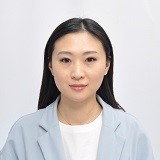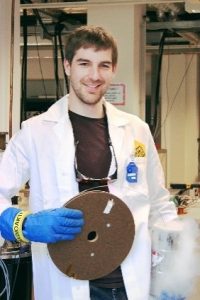Young Scientist Plenary Session Inaugural ASC Event
Wednesday, October 31, 9:30 a.m.
It is with immense pleasure that we introduce the first Young Scientist Plenary session at the Applied Superconductivity Conference. This event originated at the Magnet Technology conference held in Amsterdam in 2017 (MT25) and its introduction into ASC was strongly supported by the community. It is the intent to continue with this event at future ASC programs. We hope to see this become one of the most prestigious opportunities offered to younger scientists and an event that is highly anticipated by all attending who are interested in the future generations’ direction in applied superconductivity.
The young scientists, who are selected among recommendations made by the Program Committee, have demonstrated outstanding, significant potential in the field of superconductivity and have gained the recognition and interest of other scientists in the community.
The organizing committee chairs, Luisa Chiesa and Sasha Ishmael, believe that this addition to the plenary sessions gives the entire applied superconductivity community exposure to the novel thoughts, approaches and unexplored paths that these young scientists deliver. We would also like to highlight and thank the Penn State University, College of Engineering for sponsoring this event. With pride and pleasure we present ASC18’s selection of Young Scientist Plenaries.
| Young Scientist Plenary Speaker Name | Title of Talk | Short Bio |
Laura Garcia Fajardo, Lawrence Berkeley National Laboratory (LBNL), USA (Large Scale) |
Prospects of Canted-Cosine-Theta Magnets based on HTS Technology for High Field Accelerator Dipoles | Laura Garcia Fajardo earned her Ph.D. in Engineering and industrial production at the Polytechnic University of Valencia in 2012. Her research focused on the design of accelerator driven systems (ADS) for nuclear waste transmutation, focusing on the neutronic and thermohydraulic studies of the subcritical nuclear core. This work was part of a project that won the Award of the Academy of Sciences of Cuba in 2015. In 2013 she started a fellowship at CERN where she worked on the design and small prototype fabrication of superconducting (Nb3Sn) wiggler magnets for the Compact Linear Collider (CLIC) collaboration. In 2016 she accepted a postdoc position at LBNL to work on the design and manufacturing of Canted Cosine Theta (CCT) magnet prototypes that use Rutherford cables made of Bi-2212. In 2018 she became a Research Scientist in the Engineering Division at LBNL and she is involved in several projects including the ALS upgrade, CCT and the LCLS-II. |
Yingzhen Liu, Karlsruhe Institute of Technology (KIT), Germany (Large Scale) |
Technology Development towards a Superconducting DC Wind Generator | Yingzhen Liu was born in Hebei, China. She received the B.E.E. degree from the Harbin Institute of Technology, Harbin, China, in 2011, and the M.S.E.E. degree from the Huazhong University of Science and Technology, Wuhan, China, in 2014. She received her Dr.-Ing degree with distinction from the Karlsruhe Institute of Technology (KIT), Karlsruhe, Germany, in 2018. She is currently working as a post-doctoral researcher in the Institute for Technical Physics, KIT. Her research interest is machine design, especially the design of superconducting wind generators, and superconducting magnets. |
Daniel Cunnane, California Institute of Technology/Jet Propulsion Laboratory, USA (Electronics) |
High Temperature Superconductors for Space Science Applications | Daniel Cunnane has considerable research experience working with MgB2 devices including both Josephson technologies and heterodyne detectors. He earned his B.S. in Physics and Mathematics at the University of Pittsburgh, and his Ph.D. at Temple University the advisement of Professor Xiaoxing Xi, working on MgB2 Josephson junctions for SFQ circuits. He followed his Ph.D. work with a NASA Postdoctoral Fellowship at the Jet Propulsion Laboratory (JPL) working on MgB2 Hot Electron Bolometers. He also developed an MgB2 Josephson Mixer which showed good mixing performance up to 2 THz. In 2015, he joined the staff at JPL and was awarded the Nancy Grace Roman Technology Fellowship in Astrophysics, a NASA award for early career researchers. |
Qiuyun “Olivia” Xu, Institute of Advanced Sciences, Yokohama National University, Japan (Electronics) |
Extremely Energy-efficient Deep Learning Hardware using Adiabatic-flux-quantum Technology | Qiuyun Xu, also known as Olivia Chen, is an assistant professor at Institute of Advanced Sciences, Yokohama National University, Japan. She received the B.E. degree from Southeast University in 2008 and the M.E. and Ph.D. degrees from Yokohama National University, in 2014 and 2017. Her research interests include superconducting electronics, extremely energy-efficient computing, deep learning hardware accelerator and design automation for superconductive electronics. |
David Fischer, Atominstitut, Technology University Wien, Austria (Materials) |
HTS for Fusion – Fusion for HTS? | David Fischer is a Ph.D. student at TU Wien (Vienna University of Technology) where he is studying superconducting materials to be used in fusion applications. His research focuses on studying the impact of neutron irradiation on the ability of high temperature superconductors for loss-free current transport. For that purpose, he irradiates samples in the nuclear research reactor at the Atominstitut and after several months of decay time, he investigates how the transport properties of the samples has changed as a function of irradiation level, temperature and magnetic field. |
Rudra Pratap, University of Houston, USA (Materials) |
Challenges and Advances in Thick Film REBCO Tapes | Rudra Pratap is a Ph.D. candidate in the department of Materials Science and Engineering at University of Houston, Texas. His research interests include thick and thin film growth process optimization, film characterization and analysis. His current research focuses on using Advanced Metal Organic Chemical Vapor Deposition to develop doped and un-doped thick REBCO films, that are capable to carry very high critical current at wide range of temperature (such as 77 K to 4.2 K) and magnetic field (such as 0 T to 31 T). He received his B.Tech. (in 2013) from Gitam University, India in Mechanical Engineering. |